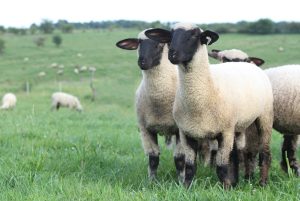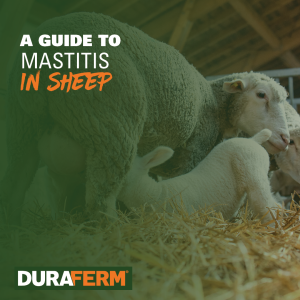
As you look over your flock during lambing season, it is generally fairly simple to tell which ewes excel in mothering ability. They are the thin ones whose spine shows, are bagged down and have two vigorous lambs half their size nursing like that fresh milk is the best thing invented. Prior to lambing those mama ewes looked great, but due to exceptional maternal traits and milking ability, they look a little rugged, just like they did last year. However, with the proper nutrition and management, they will get their weight and condition back.
“If they’re good milkers, they are going to lose weight while they are lactating. If they’re a poor milker they’re staying in good shape. But that’s not the ones you’ll keep around. If they’re a good milker, then basically they’re going to be drawn down some,” said Jerry Fitch, Oklahoma State University Professor and Extension Sheep Specialist.
The ewe’s nutritional needs are at its peak during lactation, especially if she is nursing twins. Crude protein requirements increase from 9.6% during maintenance to 13.3% and 14.8% during lactation for singles and twins, respectively. Fitch suggests the location and resources available will determine the ration producers provide; however, three constants remain. A healthy flock will always need fresh, clean water, protein and carbohydrates.
For instance, ewes on a high-protein wheat pasture in Oklahoma probably wouldn’t require much grain and no protein. Yet, if you’re lambing in snow-covered Iowa and in the barn, you will likely be feeding alfalfa hay and one to two pounds of grain per day per ewe. Both scenarios will benefit from a high-quality mineral program.
Traditional vs. Accelerated Lambing
Flocks that practice traditional lambing or lamb one season a year should not have much issue getting weight back on their ewes post-weaning, according to Fitch. They should have three to four months between weaning and breeding season, where forage is readily available and supplementation with a mineral product should help them reach an ideal weight and body condition score, between 3 to 3.5.
However, those flocks in accelerated lambing programs, with the goals of producing three lamb crops in two years, could have only 30 days between weaning and breeding to get the ewes back into optimal shape. In an accelerated lambing program, it is imperative to provide the best nutrition possible.
“That’s going to be the scenario where nutrition has got to be right. You’ve got to get them back in shape to get them rebred,” Fitch said.
Troubleshooting
Sometimes there is an ewe that just doesn’t gain back after her lambs are weaned. Fitch said producers have options, but the first thing that should happen is to check for parasites. If the ewes were not dewormed at weaning, do so quickly and keep them on a regular deworming schedule. Next, increase their plane of nutrition.
Get them on a higher plane of nutrition that includes grain, hay or higher quality forage that will get them to gain weight.
Getting the Nutrition Right
Perhaps one of the best ways to get nutrition into your flock is with a balanced mineral program like the DuraFerm® Sheep Concept•Aid®. The free-choice mineral contains organic zinc and manganese, selenium yeast and high levels of vitamin E to support maximum reproduction and health. This free-choice supplement maintains vitamin and mineral levels up, while keeping Amaferm® in their system to help them utilize forage and convert forage more efficiently. Amaferm is a precision prebiotic that impacts intake, digestibility and absorption of feedstuffs. DuraFerm Sheep Concept•Aid also comes with a HEAT® package, designed to feed anytime the temperatures reach 70 degrees or hotter. With a combination of plant extracts including capsaicin, cloves and garlic, HEAT is research-proven to regulate the core body temperature. The garlic is a natural insect deterrent, something sheep producers should be aware of.
“Amaferm is key to keeping your sheep healthy and maintaining the integrity of the gut. We know that 70% of the ruminant’s immunity function starts in the digestive tract, so a healthy gut leads to a healthy animal that will perform,” said Sam Silvers, West Texas sheep producer who also serves as an Area Sales Manager for BioZyme® Inc.
A healthy ewe is one that will gain more efficiently and will be ready for breed-back quicker. In addition to the free-choice mineral, BioZyme makes the DuraFerm® Sheep Concept•Aid® Protein Tubs. This cooked tub contains all the benefits of the loose mineral and contains 16% protein, for an added boost during the critical times of year like breeding and lambing. Silvers recommends adding the tubs to the flock’s nutrition program prior to breeding and again at lambing for some added protein to optimize health during critical phases of reproduction.
Post-weaning, the loose mineral should be adequate again until breeding, unless you run a lot of sheep in big country where the tubs simply offer added convenience.
Nutrition is vital. However, due to your flock management practices and best available feedstuffs and resources for your give geographic area, there is no one-size fits all ration. Regardless of the scenario, a vitamin and mineral program with the Amaferm advantage can keep those ewes healthy and gaining post-weaning.

